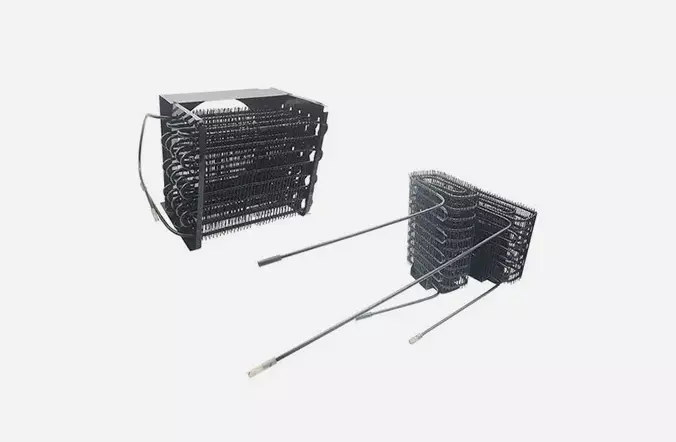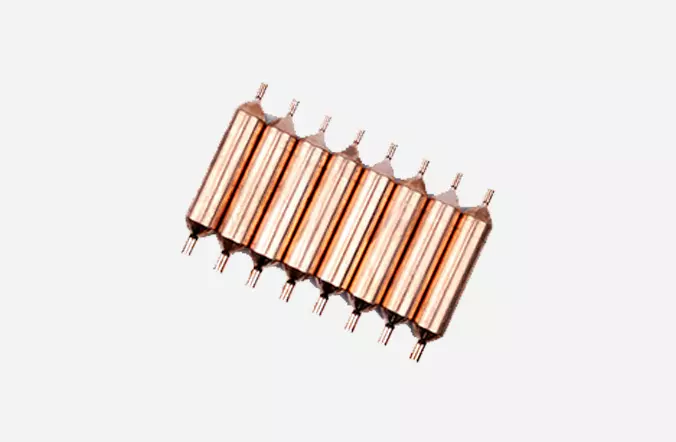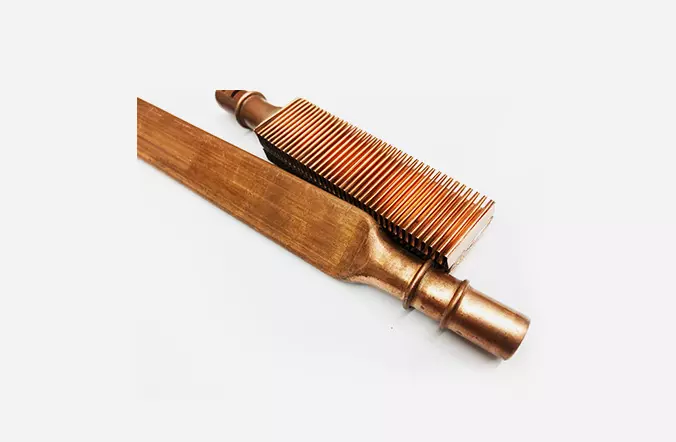1. Decoiler
• Occupied Area:Φ1800*1700 mm
• Structure Form:Automatic decoiling, stop controlling equipment
• The inner diameters of the material trays:450 mm -500 mm。Width 300-330 mm; Weight-bearing 300kg
• Decoiling method:Manual decoiling and tightening disk feeding core.
• Decoiling motor :0.75KW、1400rpm
• Equipment weight:605KG
• Equipment requirements: reasonable design, stable, during the process of decoiling the machine won’t scratching the flat pipe; two flat pipe in operation will not interfere with each other.
2. Leveling and straightening device
• Structural form: roller alignment;Do the rough alignment, fine alignment in the width and length direction.
• Method of replacement: In leveling flat pipes with different R (thickness), only the gear needs to be replaced without adjusting the height.
• In leveling flat pipes with the same R (thickness) but different width, only the width of the straightening device needs to be adjusted.
Detailed Instructions:
• When the flat tube enters the straightening unit, there is a lead-in device to prevent the flat tube from jumping and waggling.
• The thickness correction of flat pipe consists of two sets of adjustable height correction wheels. The correction wheels shall be quenched first and then properly refining to ensure the accuracy.
• The leveling wheel is fixed in the bottom group, and the upper group can be adjusted as a whole. There are 5 wheels in each group. The surface is polished first, chrome-plated and polished again to ensure its accuracy.
• Straightening wheels are fixed in the inner part, and the outer part is divided into two groups, one group is 4-4, the other group is 3-3 quenched. The R groove of straightening wheel is shallow. The above-mentioned roller with R groove is quenched by CR12 steel, and the surface is plated to increase the surface hardness and wear resistance. The other rollers are also quenched by CR12, hrC58-60, with imported high-precision bearings.
• The arrangement sequence of leveling and straightening is as follows: input settings, thickness rough processing, leveling, thickness fine processing, width fine processing and straightening;
3. Reducing settings
• Structure Form:The servo motor drives the die to reduce the width first and then the thickness.
• Changing Method:The locking die should be changed for flat pipes with different thickness or shrinkage cavity shape
• Device configuration:Servo motor
4.Feeding transmission device
• Structure Form:The feed is driven by the synchronous gear belt driven by the servo motor
• Feeding Method: Feeding by the synchronous toothed belt drive.
• Feeding Rate:600mm/s.
• Feeding Accuracy: Servo Control 0.25mm.
• Device configuration: Taiwan Delta servo motor and servo system.
5. Clamping device (including cutting clamping and tensile clamping)
• Structural Form: Using cylinder to push the splint to achieve the clamping and each flat pipe adopts different cylinder clamping. Each clamping device has two guiding devices with adjustable width composed of two bearings in front and rear.
• Component configuration: cylinder
6. Cutting device:
• Structure Form: after the cylinder is clamped on the flat tube, it is cut by the rolling blade, the linear guide rail of Taiwan TBI Company.
• The cutting surface is free of burrs and cave-ins that affect the use.
7. Breaking device
• Structural form; After the flat pipe is clamped by the cylinder, the pulling servo and the cutting work together to achieve the breaking.
• Breaking stroke: 6mm-8mm;
8、Machine tool
• Structural form; Section welded structure.


 EN
EN  EN
EN AR
AR PT
PT SV
SV DE
DE TR
TR FR
FR







